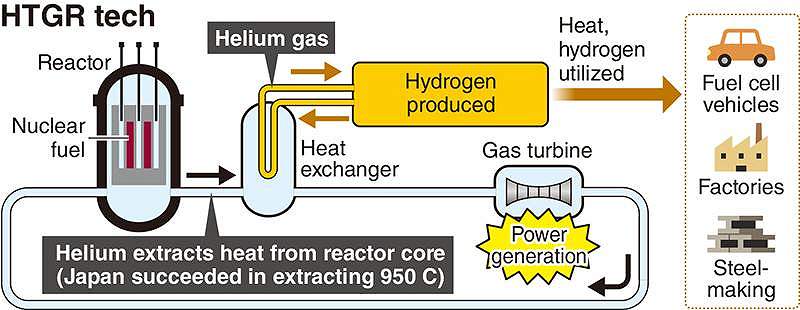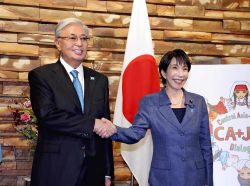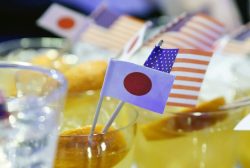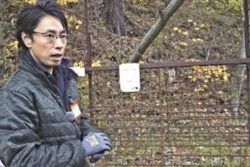
HTGR tech
20:00 JST, September 6, 2022
The British government has selected a team including the Japan Atomic Energy Agency (JAEA) to develop a high temperature gas reactor (HTGR), eying a demonstration of the next-generation nuclear technology in the 2030s.
The team, which includes the Japanese-government-backed JAEA and Britain’s National Nuclear Laboratory, will conduct preliminary studies on the scale of the reactor and its power generation costs, among other things.
The British government plans to allocate the team about £750,000 (about ¥120 million) in research funds.
Utilizing helium gas as a reactor coolant, HTGRs can generate heat above 700 C, much higher than that of reactors cooled with water. In addition to power generation, the heat can be used to produce hydrogen for fuel cells.
Compared to conventional light-water reactors, which use large amounts of water to extract heat, HTGRs have fewer location restrictions.
The nuclear fuel is covered with a highly heat-resistant ceramic material, making it difficult for the core to melt down. In principle, hydrogen explosions should not occur because water is not used.
Such advantages have put HTGR technology in the spotlight as a next-generation nuclear power source.
The United States, Britain, Canada, Poland, China, and South Korea are focusing their efforts on developing such reactors.
Last year, the British government decided to build a demonstration HTGR in the country. The project will proceed in three stages: Preliminary studies will be completed in about six months; the basic design will be completed by around 2025; and the construction and operation of the reactor will be realized by the early 2030s.
For the first phase of the project, the British government has selected five teams, including the Japan-Britain team. Participation in the construction and demonstration will depend on whether it is selected by the British government in the latter stages.
In 2004, the JAEA succeeded in generating a record 950 C in its High Temperature Engineering Test Reactor (HTTR), an experimental gas-cooled reactor in the town of Oarai, Ibaraki Prefecture.
In a statement, Britain’s National Nuclear Laboratory said the Japan-Britain collaboration would “combine JAEA’s world-leading capability on HTGRs with more than 50 years of research and development from the U.K.’s national laboratory for nuclear fission.”
Prime Minister Fumio Kishida has indicated he is considering the construction of a next-generation reactor in Japan.
The JAEA aims to foster talent and improve its technology by participating in the British project. However, there is also concern that technology developed in Japan over the years will flow out of the country.
“We will strictly discuss how to handle data and intellectual property,” said the JAEA’s Junya Sumita. “We want to make sure that we can bring back to Japan technology gained through participation in the project.”
"Business" POPULAR ARTICLE
-

Keidanren Chairman Yoshinobu Tsutsui Visits Kashiwazaki-Kariwa Nuclear Power Plant; Inspects New Emergency Safety System
-

Tokyo Economic Security Forum to Hold Inaugural Meeting Amid Tense Global Environment
-

Imports of Rare Earths from China Facing Delays, May Be Caused by Deterioration of Japan-China Relations
-

University of Tokyo Professor Discusses Japanese Economic Security in Interview Ahead of Forum
-

Japan Pulls out of Vietnam Nuclear Project, Complicating Hanoi’s Power Plans
JN ACCESS RANKING
-

Keidanren Chairman Yoshinobu Tsutsui Visits Kashiwazaki-Kariwa Nuclear Power Plant; Inspects New Emergency Safety System
-

Tokyo Economic Security Forum to Hold Inaugural Meeting Amid Tense Global Environment
-

Imports of Rare Earths from China Facing Delays, May Be Caused by Deterioration of Japan-China Relations
-

University of Tokyo Professor Discusses Japanese Economic Security in Interview Ahead of Forum
-

Japan Pulls out of Vietnam Nuclear Project, Complicating Hanoi’s Power Plans

























